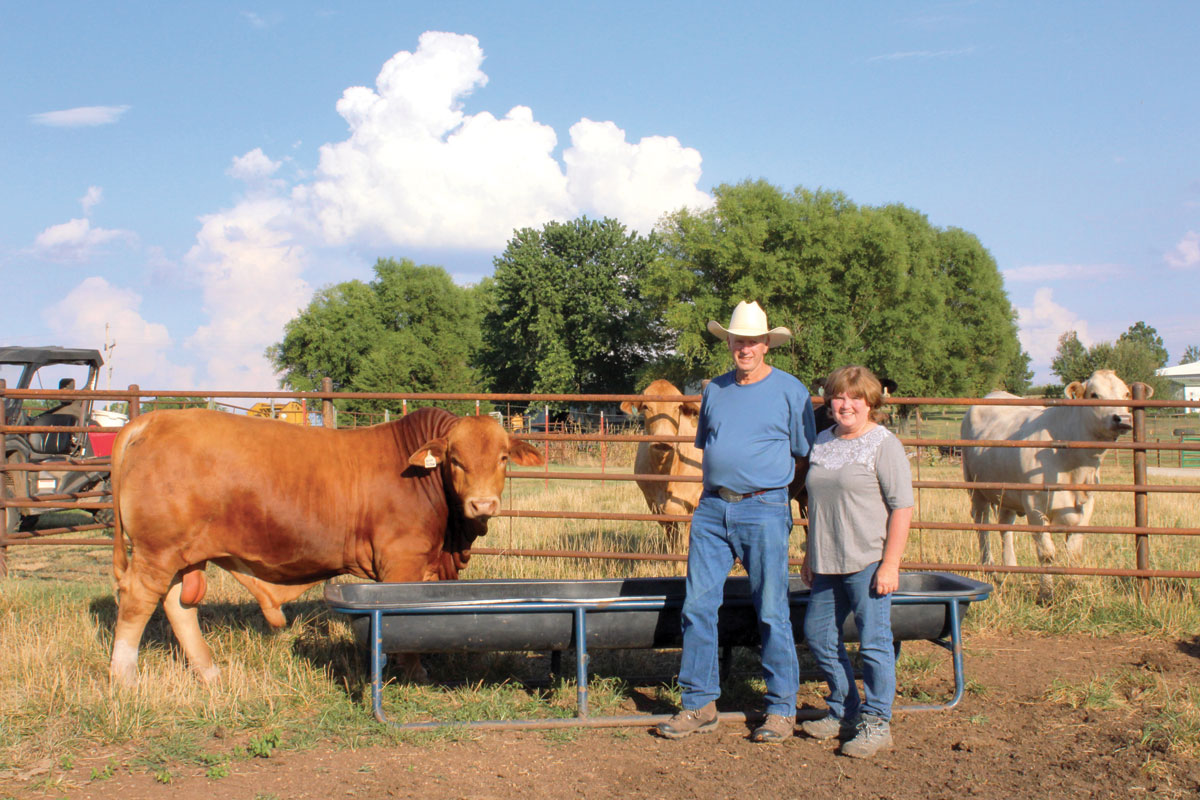 Opportunity in farming and agriculture gives people ability to choose what works for them. Sue Beagle, of Exeter, Mo., chose raising broiler chickens because it was something she could do for herself, and it was something she could do into her retirement years.
Opportunity in farming and agriculture gives people ability to choose what works for them. Sue Beagle, of Exeter, Mo., chose raising broiler chickens because it was something she could do for herself, and it was something she could do into her retirement years.
“In 1979, I built my first two broiler houses,” said Sue. “It was my retirement program.” She explained, “It allowed to me to work at home, so I could be with my kids.” Sue takes pride in her ability to raise 4 1/2 pound birds in 35 days. “It’s a job a woman can do. You’re not going to get rich, but it is a steady income.”
Sue originally built the houses with a contract with Hudson Foods. “I have raised for all of them, though I started with Hudson – then Tyson and George’s and now with Simmons, which is out of Decatur, Ark.” She appreciates working with Simmons, “Even though some farmers may have as many as 10 houses, I’m appreciated just the same with my two houses.”
Many innovations have entered the world since Sue became exposed to raising broilers. “My mom and dad raised them in the ‘50s in Star Hollow near Washburn, Mo.,” said Sue. Harlin and Eva (Hawkins) Smith, Sue’s parents, raised broilers which, then, took 8 weeks to grow a 3-pound bird.
Chicken raising has progressed, and Sue said, “With genetics in breeding, they are speculating that by 2020, we’ll be raising a 5-pound bird in 5 weeks.”
In 1996, Sue built two more houses, and kept four houses going until 2003. “I raised chickens in all four houses, until I had to do a retrofit, or shut down. I only retrofitted the new ones.” With the older homes from 1979, she sold sections to farmers who deconstructed it and used the parts to build pole barns. Then she bulldozed the foundations. “The retrofit was a good thing. Everything is now controlled by computers, they are controlled environmental houses. They start the chicks at 92 degrees, and by the time they go out they are at 66 degrees.” The computer monitoring checks a lot of different factors of the environment.
Sue has become quite experienced at raising birds, and still loves getting the chicks. Though she is a chicken farmer, getting those baby chicks brings out the mother in her, “I think it helps, because I’m a nurturer.” What’s the most important factor in growing a good bird? Sue said, “Getting the chicks off to a good start – the first 10 days are essential.” She explains further, “You want a dry house. The drier the house, the better the bird. Keeping water pressure correct, making sure waterers are at the right height, and maintaining good air circulation help keep the house dry.” The night before getting the chicks, she prepares the houses, and brings in a technician that sprays the floor of the house to remove any ammonia residue that can deteriorate air quality. “That ground has to be warm, and the air quality has to be good, and you have to have your feed and water ready,” said Sue.
Sue has seen a lot of changes throughout her experience with chicken houses, “I was hoping they would let me keep my old houses. But, it’s all been for the best – it makes it all easier. The innovations were costly, but management is easier, and the computers are setting the environment for us.”
Through her years as a broiler chicken grower, Sue has been able to supplement her income with other full-time jobs and part-time businesses. Sue enjoys spending time with her grandkids, family and friends, including her boyfriend, Dan, her daughter, Santana and her son, Rusty.







